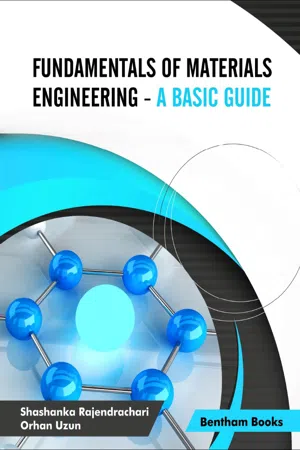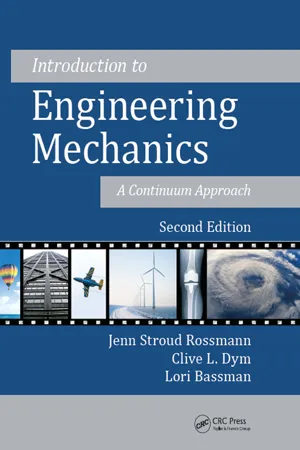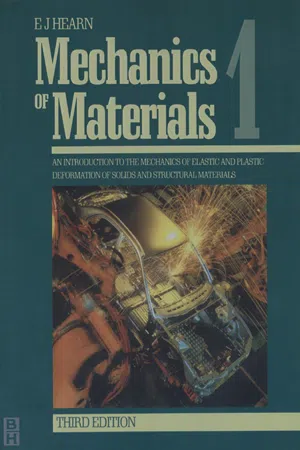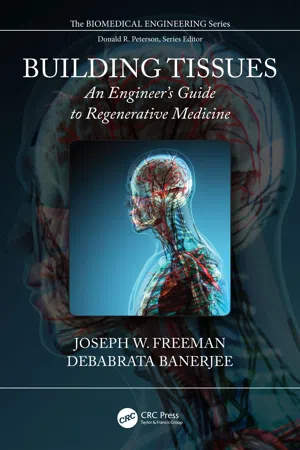Technology & Engineering
Stress Strain Curve
The stress-strain curve is a graphical representation of the relationship between the stress applied to a material and the resulting strain it undergoes. It typically shows the material's behavior under tension, providing valuable information about its mechanical properties such as yield strength, ultimate strength, and ductility. This curve is essential for understanding a material's response to external forces and for designing structures and components.
Written by Perlego with AI-assistance
Related key terms
Related key terms
1 of 4
Related key terms
1 of 3
8 Key excerpts on "Stress Strain Curve"
- eBook - ePub
Art Conservation
Mechanical Properties and Testing of Materials
- W. (Bill) Wei(Author)
- 2021(Publication Date)
- Jenny Stanford Publishing(Publisher)
In conservation, we are generally dealing with stresses and eventually things breaking when the stress reaches the material’s strength. However, in many engineering/industrial applications, and in some exceptional cases in conservation, especially of industrial heritage objects, one failure criterion is that something deforms too much. The next time the reader flies in a passenger airplane, take a look at the front of the jet engine. There, one will see the so-called fan turning. In operation, each fan blade will be loaded by a centrifugal force, which translates into a stress, which further translates into strain of the blade during flight. It is not particularly pleasant if the strain is so great that the fan blade comes in contact with the turbine engine housing. Thus, analogous to the force/stress situation, engineers who design these parts cannot go to suppliers and expect them to tell them how much a material will lengthen under a given force. They must translate that into strain under a given stress. The supplier can then provide information on the strain behavior of materials, information which is useful for every client.2.3 The Relationship between Stress and StrainStress and strain are related as one might expect. As the force is increased for the tensile test discussed in Fig. 2.1 or 2.6 , a graph will be obtained showing the relationship between the applied force on the specimen and the change in length for a typical metal (see Fig. 2.8a ). These results can be calculated into stress and strain based on the original load-carrying area of the specimen, A0 , and the original length of the specimen l0 , as defined in Fig. 2.6 . This results in a so-called engineering stress-strain (σ-ε) diagram as shown schematically in Fig. 2.8b .Figure 2.8 Schematic (a) load elongation and (b) stress-strain diagrams for a typical metal.For most metals, the increase in strain with an increase in stress begins as a straight line. This is called “linear” behavior. This part of the graph also describes something known as elastic behavior. If you stressed the material to, say point 2 in Fig. 2.8b and then unstressed it, the specimen would go back to its original length. A material is thus called elastic in technical terms when it returns back to its original form after being deformed. If the stress-strain curve is a straight line as in the lower part of Fig. 2.8b , we say that the material shows linear-elastic behavior.At a certain point for metals, the stress level, σy , the curve starts to bend and eventually reaches a maximum at the stress level, σUTS in the tensile case, or more generally, σf . The curve then bends down to the X which marks the point at which the specimen breaks or technically, fractures - Shashanka Rajendrachari, Orhan Uzun(Authors)
- 2021(Publication Date)
- Bentham Science Publishers(Publisher)
Original Gauge Length: Before conducting the tensile tests, two permanent marks are made on the test specimen at an appropriate distance called “Original gauge length”. By subtracting the original gauge length (before the test) with final gauge length (after the test) will give the extent of tensile strength of the tested specimen.3. ENGINEERING STRESS-STRAIN CURVES
The stress-strain curves can be obtained during testing a specimen. As we proceed with the test, the length of the specimen increases and the cross-sectional area decreases; but it is assumed here that dimension remains unchanged. Therefore, engineering stress and engineering strain can be explained by the following equations;The load-bearing capacity of materials is called loadability. This is one of the important mechanical properties which decide the strength of materials. The loadability of materials can be studied by using a tensile testing machine (Universal testing machine) by plotting the engineering stress-strain curve. The engineering stress-strain curve is the same as that of the load-extension diagram. This is because, if the parameters on X-axes and Y-axes are divided by some constants, the original diagram remains unchanged. Therefore, only scales on the X and Y-axes will change, but the original diagram remains unaffected. If we divide the extension (X-axis) by the original gauge length, then the property becomes ‘strain'. Similarly, if we divide the load (Y-axis) by the original area, then the property becomes ‘stress’. Therefore, the load-extension diagram and engineering stress-strain diagrams are the same.4. TRUE STRESS-STRAIN CURVES
During the tensile test, the specimen will be pulled apart slowly under applied load until it breaks. The specimen will behave differently from the start of the test until it breaks. These curves can be plotted by using the values of true stress and true strain generated instant to instant during the tensile test. Therefore, it will undergo different phenomena during the test, and it can be divided into four phases or regions, as illustrated in Fig. () [34- eBook - ePub
Introduction to Engineering Mechanics
A Continuum Approach, Second Edition
- Jenn Stroud Rossmann, Clive L. Dym, Lori Bassman(Authors)
- 2015(Publication Date)
- CRC Press(Publisher)
Figure 2.15 ). This diagram represents the behavior of mild steel, a ductile material. Hooke’s law, as we already know, governs the low-strain regime of the diagram, where stress and strain are linearly related. But what’s going on at higher stress and strain, as the curve bends and ultimately terminates?The point at which the curve is no longer linear, often a plateau on the stress–strain diagram, is called the material’s yield point, defining a yield strength (or yield stress). Generally, beyond the yield point, it takes much less stress to cause much higher strains than in the Hookean region, and, of course the relationship between stress and strain is no longer linear. In some materials, a maximum stress may be reached just before fracture. This is called the ultimate strength (or ultimate stress) of the material. Finally, we see that the curve ends abruptly at a certain stress point. This point represents the stress that would cause the material to rupture or fracture. From Figure 2.14 , we observe that ductile materials can withstand much more strain than brittle materials. We classify materials as ductile or brittle based on their behavior at room temperature; at elevated temperatures, an otherwise brittle material may behave more like a ductile one, while at lowered temperatures, a ductile material may behave like a brittle one.*FIGURE 2.15Idealized stress–strain diagram for mild steel (ductile).Stress–strain curves for various materials are obtained through rigorous testing of the materials’ behaviors in tensile, compressive, and bending tests. The tensile tests are performed in a setup like that shown in Figure 2.2 . Near the breaking point, a specimen of mild steel may resemble the sketch in Figure 2.16 . The narrowing of the specimen at its midpoint is called “necking.” Although the overall cross section of a bar in tension will narrow during elastic deformation (as we will learn in Section 4.1 - Josip Brnic(Author)
- 2018(Publication Date)
- Wiley(Publisher)
7 Relationships Between Stress and Strain 7.1 Fundamental Considerations When a solid body is subjected to a load, it experiences changes in its volume and/or shape. The analysis of the stress in solid bodies (deformable bodies) is of interest in the design process. On the basis of previous analyses, it is evident that the state of stress may be defined by the stress tensor and the state of strain may be defined by the strain tensor. In the solving of problems in the field of elastostatics, there are six unknowns in the stress tensor (Equation (2.6)), six unknowns in the strain tensor (Equation (3.19)) and three unknowns in the displacement vector (Equation (3.20)). The above implies that the tensor components are symmetric with respect to the main diagonal of the tensor. There are fifteen unknowns in total. This means that one needs to have fifteen equations if the unknowns need to be derived. However, the theory of stress and the theory of strain are derived “in general”. This means that the theories have been derived independent of the material properties; that is, independent of the material from which the considered body is made. As such, the theory of stress is based on the equilibrium of forces while the theory of deformation is based on the compatibility of geometry. It is to be expected that the stress occurring in a body is associated with the deformation and the material properties. The question that arises is what the relationship between stress and strain is. It is very difficult to find universal equations that can be used to summarise the relationship between stress and strain for all of types of solid bodies, and especially if all of types of continuum are considered- eBook - ePub
- Sudip S. Bhattacharjee(Author)
- 2021(Publication Date)
- CRC Press(Publisher)
Figure 9.3 ):(9.1)ε == lnΔ LL1 + e(9.2)σ =F A= s .1 + eFigure 9.1 Uniaxial tensile testing of a material specimen.Figure 9.2 Engineering stress–strain response of a material test specimen.Figure 9.3 True stress–strain response calculated from engineering stress–strain response of a ductile material specimen.Initial slope of the true stress–strain diagram defines the elastic modulus (E) of the material (Figure 9.3 ). Yield stress point Sydefines the departure from linear elastic stress–strain behavior to nonlinear material deformation (indicating accumulation of permanent plastic deformation in ductile metals). Uniaxial deformation response of material, for stress values below yield strength (σ < Sy), is defined by the elastic modulus (E). When uniaxial force is applied to a solid, it deforms in the direction of the applied force; and it also expands or contracts laterally depending on whether the force is tensile or compressive. If the solid is homogeneous and isotropic, and the material remains elastic under the action of the applied force, the lateral strain bears a constant relationship to the axial strain. This constant, called Poisson’s ratio, is an intrinsic material property just like Young’s modulus and shear modulus. ASTM Standard E132-17 is generally used to determine the Poisson’s ratio from tensile load testing of material specimens having rectangular cross-section. As discussed in Chapters 2 –7 , elastic stress–strain responses of two- and three-dimensional stress fields can be defined by using E and ν with Hooke’s law (discussed in Section 2.4 - eBook - ePub
Mechanics of Materials Volume 1
An Introduction to the Mechanics of Elastic and Plastic Deformation of Solids and Structural Materials
- E.J. Hearn(Author)
- 1997(Publication Date)
- Butterworth-Heinemann(Publisher)
1.7 .Fig. 1.3 Typical tensile test curve for mild steel.Fig. 1.5 Tensile test curves for various metals.Fig. 1.6 Typical stress-strain curves for hard drawn wire materials-note large reduction in strain values from those of Fig. 1.5 .Fig. 1.7 Typical tension test results for various types of nylon and polycarbonate.For the first part of the test it will be observed that Hooke’s law is obeyed, i.e. the material behaves elastically and stress is proportional to strain, giving the straight-line graph indicated. Some point A is eventually reached, however, when the linear nature of the graph ceases and this point is termed the limit of proportionality .For a short period beyond this point the material may still be elastic in the sense that deformations are completely recovered when load is removed (i.e. strain returns to zero) but Hooke’s law does not apply. The limiting point B for this condition is termed the elastic limit . For most practical purposes it can often be assumed that points A and B are coincident.Beyond the elastic limit plastic deformation occurs and strains are not totally recoverable. There will thus be some permanent deformation or permanent set when load is removed. After the points C , termed the upper yield point , and D , the lower yield point , relatively rapid increases in strain occur without correspondingly high increases in load or stress. The graph thus becomes much more shallow and covers a much greater portion of the strain axis than does the elastic range of the material. The capacity of a material to allow these large plastic deformations is a measure of the so-called ductility - eBook - ePub
- A. M. Lokoshchenko(Author)
- 2017(Publication Date)
- CRC Press(Publisher)
t ):(1.54)ε( t )=+ pσ ( t )E( t )≡ const .The relaxation process is the creep with decreasing stress which takes place so that the increase of the creep strain compensates the decrease of the elastic strain as a result of the decrease of stress. Stress relaxation is often observed in technology. A typical example is stress relaxation in any threaded joint. The bolts are tightened a preliminary force which weakens with time. The axial deformation of the bolt and the axial force in the bolt are linked by the relationship (1.54 ). The stress relaxation phenomenon should be taken into account in the operation of many structures in which the possibility of deformation of one of the elements is restricted by constraint from the side of other elements.The formulation of the relaxation experiments is far more complicated than the formulation of the creep experiments. It is necessary to ensure that the rigidity of the dynamometer and other components connected gradually with the bar is considerably greater than the rigidity of the bar; only if these conditions are satisfied, it can be assumed that the axial deformation of the bar is constant. In practice, the stress relaxation tests are carried out using the procedure in which the loading device, generating the tensile stress, is connected to the tracking system. The strain measurement device is connected with the contact of the device influencing, by means of the tracking system, the loading device in such a manner that the deformation of the bar remains constant throughout the test period. Since the entire measurement system has a certain sensitivity threshold, the stress relaxation tests is in fact a sequence of the processes with the stresses decreasing in steps. - eBook - ePub
Building Tissues
An Engineer's Guide to Regenerative Medicine
- Joseph W. Freeman, Debabrata Banerjee(Authors)
- 2018(Publication Date)
- CRC Press(Publisher)
CHAPTER 1Stress and Strain Analyses 1.1 INTRODUCTIONYour body is subjected to a multitude of forces with every step, every breath, and every heartbeat. A variety of forces can produce different effects on different tissues. When these forces are applied to tissues, they produce stresses and strains. Tendons and ligaments are stretched, bones are compressed, blood shears the inner surfaces of blood vessels and stretches their walls. To function correctly, specific tissues must be able to withstand certain forces. A tissue engineer must be aware of these forces and produce scaffolds that can withstand them when they are implanted. In this section we will introduce the reader to the concepts of force, stress, and strain. For a more in-depth analysis of these topics the reader may want to read Mechanics of Materials by Ferdinand P. Beer, E. Russell Johnston, Jr., and John T. DeWolf or Engineering Mechanics: Statics by J. L. Meriam and L. G. Kraige.1.2 CALCULATING FORCES1 ,2Both of these texts were used as references for this section.These forces are applied in different directions and in different ways. The most commonly studied are normal forces. These forces act perpendicular to the planes that they are affecting and create normal stresses on the object that they are placed on. In this chapter we will review how to solve for the magnitude of forces and use the forces to calculate normal stresses. We will then review how these stresses affect objects through changes in the objects’ lengths.One way to calculate the magnitude of the force acting on an object is to use statics. We will perform a quick review of statics and use it to solve for the forces acting on the tissues in a basic biomechanics problem. Statics allows us to calculate the magnitude of the forces placed on an object through a series of equilibrium balances. For example, we have the following situation:
Index pages curate the most relevant extracts from our library of academic textbooks. They’ve been created using an in-house natural language model (NLM), each adding context and meaning to key research topics.
Explore more topic indexes
Explore more topic indexes
1 of 6
Explore more topic indexes
1 of 4







